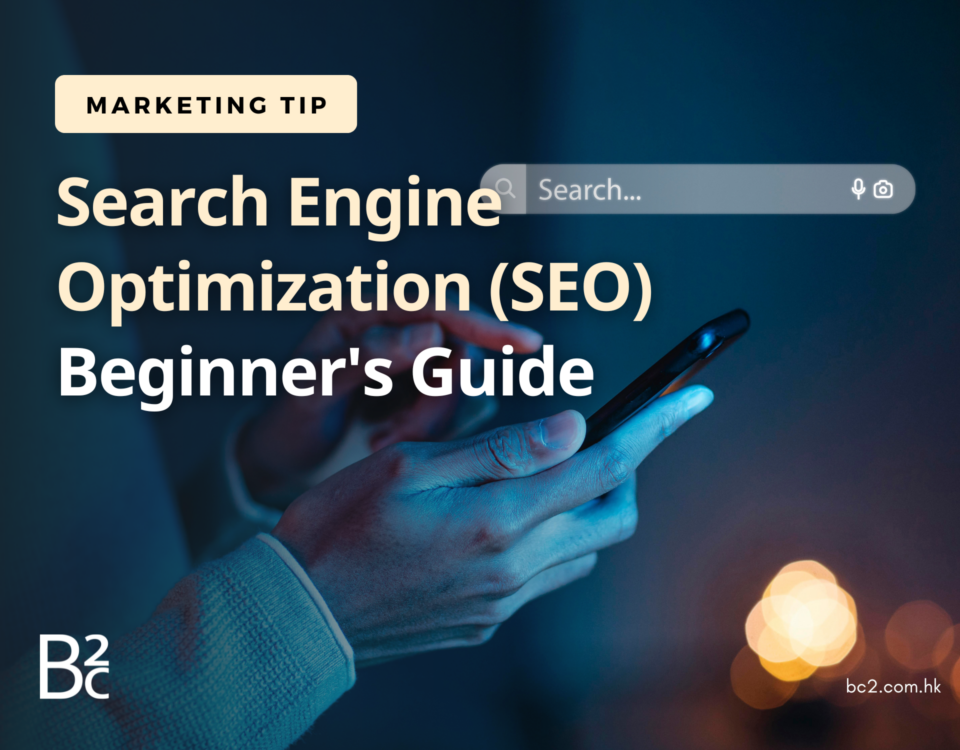


Starting from Scratch: How to Successfully Enter the E-commerce Industry – Part 1
November 13, 2023


Google Ads vs. Facebook Ads: Which is more suitable for your business?
January 3, 2024Starting from Scratch: How to Successfully Enter the E-commerce Industry - Part 2
Table of Contents
Venturing into the realm of e-commerce is a challenge, but for success, you need to master inventory management, digital marketing, and understand how to assess and optimize your operational model. In the next part, we will delve deeper into these critical aspects.
Chapter 4: Operating E-commerce

1. Inventory Management
Implementing best practices for inventory management to ensure an adequate stock. Utilize e-commerce tools and software to streamline inventory management.
2. Digital Marketing
Establishing brand awareness and attracting traffic are key to the success of an e-commerce website. Here are some strategies to help you achieve these goals:
- Excellent Website Design: Ensure your website design is clean, modern, and easy to navigate. Use engaging images and visual elements to enhance user experience. Make the website responsive to mobile devices to ensure smooth operation across various devices.
- High-Quality Content: Provide valuable content, including blog articles, product descriptions, and guides, to attract and retain user attention. Use Search Engine Optimization (SEO) to improve your content’s ranking on search engines. Interact with your target audience, responding to their questions and feedback.
- Social Media Marketing: Establish a brand presence on relevant social media platforms and engage with your audience. Regularly share interesting content and use social media advertising to expand your audience.
- Email Marketing: Build an email list and provide subscribers with valuable content and promotions. Use personalized email marketing strategies to increase engagement and conversion rates.
- Search Engine Marketing (SEM): Use paid search ads to increase your brand exposure on search engines. Optimize ads to ensure they target the audience’s keywords.
- Partner and Affiliate Marketing: Establish partnerships with relevant brands and websites to expand your audience. Participate in affiliate marketing programs to increase your sales channels.
- Customer Reviews and Reputation: Encourage satisfied customers to leave reviews and testimonials, showcasing them on your website. Provide excellent customer service to enhance customer loyalty and reputation.
- Regular Analysis and Optimization: Monitor website analytics data to understand audience behavior and adjust your strategies accordingly. Continuously optimize website performance to ensure the best user experience.
- Special Promotions and Campaigns: Offer attractive promotional activities and discounts to attract new customers and boost sales. Regularly host special promotion events to remind existing customers to return for purchases.
- Web Security and Trust: Ensure your website is secure to protect customer data. Provide trust elements such as SSL certificates and secure payment options.
By combining these strategies, you can establish brand awareness, attract more traffic, and achieve success for your e-commerce website. Remember, this is an evolving process that requires continuous monitoring and adjustment.
3. Customer Service:
Provide excellent customer service to build a loyal customer base. Utilize customer relationship management tools to track customer information.
4. Payments and Logistics:
Choose a payment processing method that suits your needs. Manage order processing and logistics to ensure timely delivery.


Chapter 5: Growth and Optimization
Monitoring and evaluating your business performance is crucial to ensuring the success of your e-commerce operations. Here are some methods and key indicators that can be used to assess your business performance:
- Website Analytics: Use tools such as Google Analytics to track website traffic, visitor behavior, conversion rates, and sales. Analyzing website data can help you understand how your audience interacts with your site and identify opportunities for improvement.
- Sales and Revenue: Track your sales data, including monthly, quarterly, and annual sales figures. Understand which products or services are best-selling and monitor changes in sales trends.
- Customer Satisfaction: Collect customer feedback and reviews, using this information to evaluate customer satisfaction with your business. High customer satisfaction is often associated with loyal customers and positive word-of-mouth.
- Inventory Management: Monitor your inventory levels to ensure you have sufficient stock to meet demand while avoiding overstock.
- Return Rate: Track the return rate to assess product quality and customer satisfaction. A high return rate may be a sign of issues.
- Costs and Profits: Evaluate the operational costs of your business and calculate the gross profit per sale. Ensure your business remains profitable.
- Customer Acquisition Cost (CAC) and Customer Lifetime Value (CLV): Analyze the cost of acquiring new customers and the value they bring throughout their lifecycle. Ensure that CAC is lower than CLV.
- Market Share: Monitor your market share and understand how your competitors are performing. Strive to expand your market share.
- Brand Awareness: Track your brand awareness and social media follower count. Higher brand awareness is often associated with more traffic and sales.
- Website Performance: Ensure your website runs smoothly on various devices and test page loading speeds. Fast and stable website performance contributes to an improved user experience.
- Security: Protect customer data and prevent security vulnerabilities. No data leaks and security issues are crucial aspects of performance.
- Collect Feedback: Regularly collect feedback from employees, customers, and suppliers to improve business operations.
- Regular Reporting and Evaluation: Establish regular reporting and evaluation processes to ensure your business is on track and able to make adjustments.
By continuously monitoring and evaluating business performance, you can identify issues and opportunities in a timely manner, ensuring the success of your e-commerce website and achieving long-term sustainable growth.


Conclusion
To become a successful e-commerce entrepreneur, you need to possess certain skills and take some key steps. Here are several important recommendations that can help you achieve success in the e-commerce field:
- Market Research: Conduct in-depth research into the market you are interested in before starting. Understand market demand, competitors, target audience, and trends. This will help you identify opportunities and positioning for your product or service.
- Selecting the Right Product or Service: Choose a product or service with market demand. Ensure your product or service has uniqueness, or that you can provide better value.
- Business Plan: Develop a detailed business plan, including market strategy, financial forecasts, marketing strategies, and operational plans. This will help you establish direction and goals in the early stages of operation.
- Choosing the Right E-commerce Platform: Choose an e-commerce platform that suits your business needs. Different platforms have different features and costs; make a wise choice based on your budget and technical expertise.
- Website Construction: Build a professional and user-friendly website. Ensure the website design is modern and provides a high-quality user experience. Excellent website design is crucial for attracting and retaining customers.
- Digital Marketing: Implement effective digital marketing strategies, including search engine optimization (SEO), social media marketing, email marketing, and paid advertising. These strategies will help attract traffic and increase brand awareness.
- Customer Service: Provide excellent customer service. Respond promptly to customer inquiries, resolve issues, and build customer trust. Satisfied customers often become loyal repeat customers.
- Operations and Inventory Management: Ensure effective inventory management to meet demand while avoiding overstock. Optimize business operations to reduce costs.
- Continuous Learning: E-commerce is a constantly changing field. Continuously learn and update your knowledge to stay competitive. Attend courses, read industry news, and participate in online communities.
- Expansion Planning: Once your business is operating steadily, consider expanding into new markets or adding new product lines. Plan for business growth and expansion.
- Persistence and Patience: Successful e-commerce businesses take time and effort. Persevere and have patience, especially when facing challenges, particularly in the early stages.
Most importantly, continually evaluate your business and make adjustments based on feedback and data. Becoming a successful e-commerce entrepreneur requires a firm commitment and continuous improvement.
Get Your Quote
Share details about your business, and we’ll tailor a solution for you!



